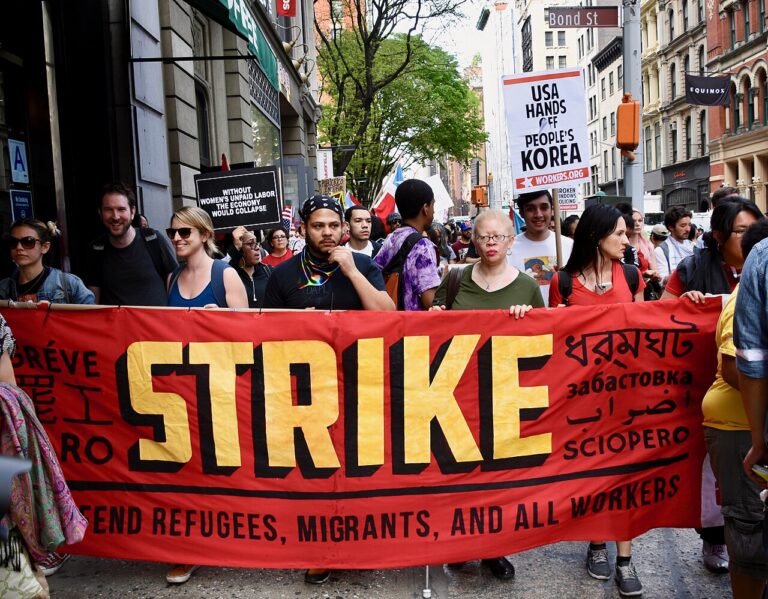Ross Evans is a student at Harvard Law School and a member of the Labor and Employment Lab.
On Sunday, the Brazilian government reached an agreement with striking truck drivers to end a seven-day protest that began last week. The strike is expected to cost the Brazilian government $2.6 billion by the end of the year. The truckers, whose strike tactics included blocking highways throughout the country, were striking to protest increased fuel costs that are driven by international fluctuations in oil prices. As a result, the truckers’ unions achieved several governmental concessions including tax cuts on diesel fuel and a sixty-day price-freeze.
More than 3,000 Canadian Pacific Railway employees, collectively represented by Teamsters Canada and the International Brotherhood of Electrical Workers, could strike as early as 10 PM ET tonight after filing a strike notice on Saturday. Canadian Pacific Railways and the unions are engaged in negotiations for a new collective bargaining agreement. After 98% of the Teamsters Canada members in the bargaining unit rejected the Railway’s final offer on Friday, Teamsters President Doug Finnson stated that Canadian Pacific, the country’s second-largest railway, “clearly isn’t serious about reaching a negotiated settlement.” Canadian Pacific Railway, for their part, is already “winding down service” in preparation for the strike, according to The Toronto Star. Should the strike commence tonight, it would mark the third strike by Canadian Pacific Railway employees since 2012.
The Equal Employment Opportunity Commission is investigating complaints that semiconductor chip-maker Intel discriminated on the basis of age when laying-off employees. According the documents reviewed by The Wall Street Journal, in a round of May 2016 layoffs, “the median age of the 2,300 employees let go was 49 years old, seven years older than the median age of their peer employees who remained.” Over the past three years, Intel has laid off more than 10,000 workers, but has denied that age was a consideration in any of its decisions.
Because of compensation-disclosure requirements under Dodd-Frank that came into effect this year, compensation data for rank-and-file employees is now available for publicly traded companies. The Wall Street Journal analyzed this data and examined trends by factors such as industry, company size, and region. Interestingly, while the average number of employees for an S&P 500 company is approximately 53,000, companies that employed only 17,000 workers boasted the highest employee compensation and companies that employed around 82,000 employees maintained the lowest employee compensation.
In a piece last week, New York Magazine‘s Eric Levitz argued that, as a collective whole, labor unions work for the greater good and thus should not be considered by politicians to be a “special interest group.” Levitz writes: “In sum: If Democrats want to put the greater good above special interests, they will prioritize the policy goals of organized labor next time they take power. If they want to put winning elections above all else, however, then they will do the exact same thing.”






Daily News & Commentary
Start your day with our roundup of the latest labor developments. See all
January 8
Pittsburg Post-Gazette announces closure in response to labor dispute, Texas AFT sues the state on First Amendment grounds, Baltimore approves its first project labor agreement, and the Board formally regains a quorum.
January 7
Wilcox requests en banc review at DC Circuit; 9th Circuit rules that ministry can consider sexual orientation in hiring decisions
January 5
Minor league hockey players strike and win new deal; Hochul endorses no tax on tips; Trump administration drops appeal concerning layoffs.
December 22
Worker-friendly legislation enacted in New York; UW Professor wins free speech case; Trucking company ordered to pay $23 million to Teamsters.
December 21
Argentine unions march against labor law reform; WNBA players vote to authorize a strike; and the NLRB prepares to clear its backlog.
December 19
Labor law professors file an amici curiae and the NLRB regains quorum.